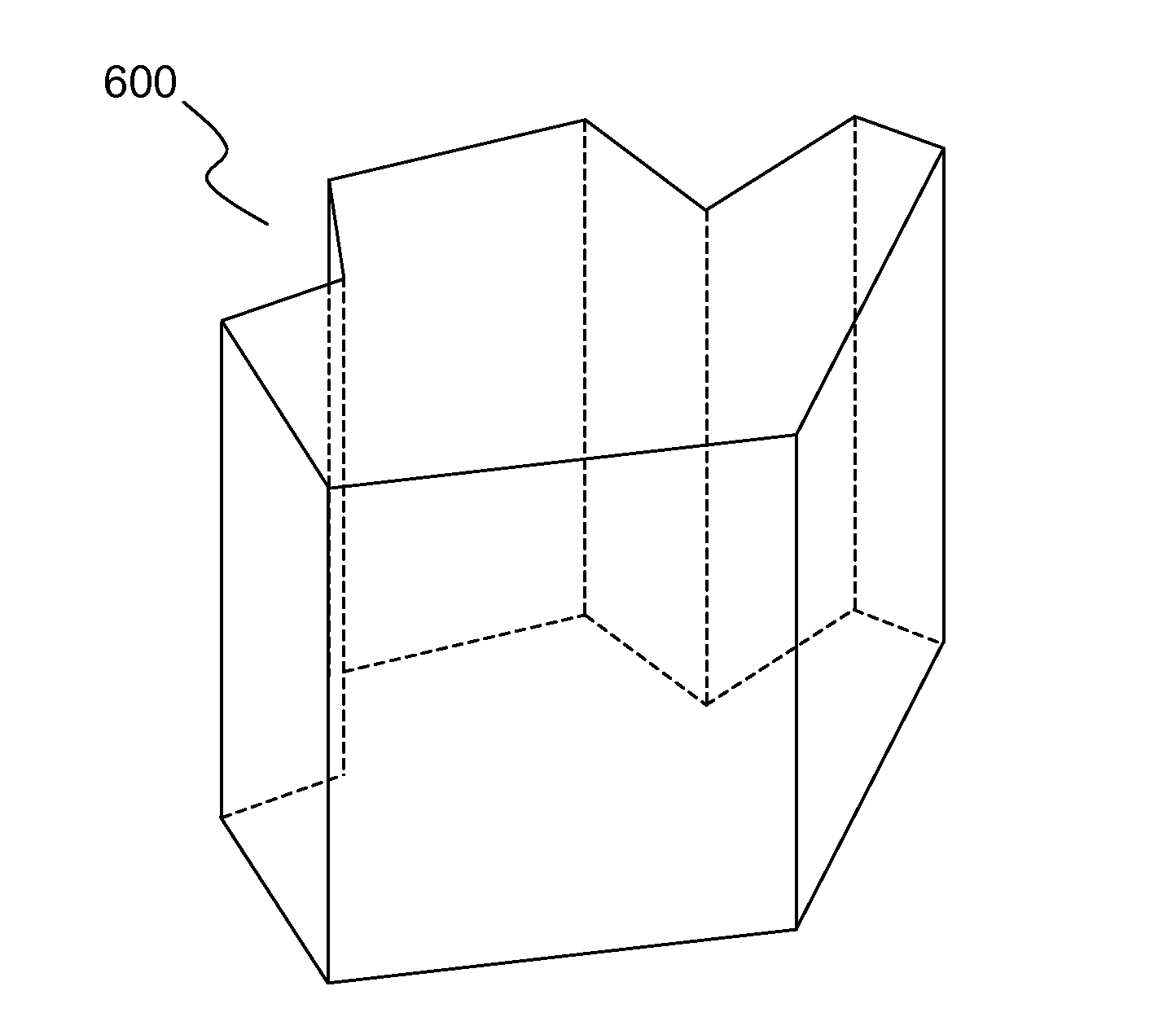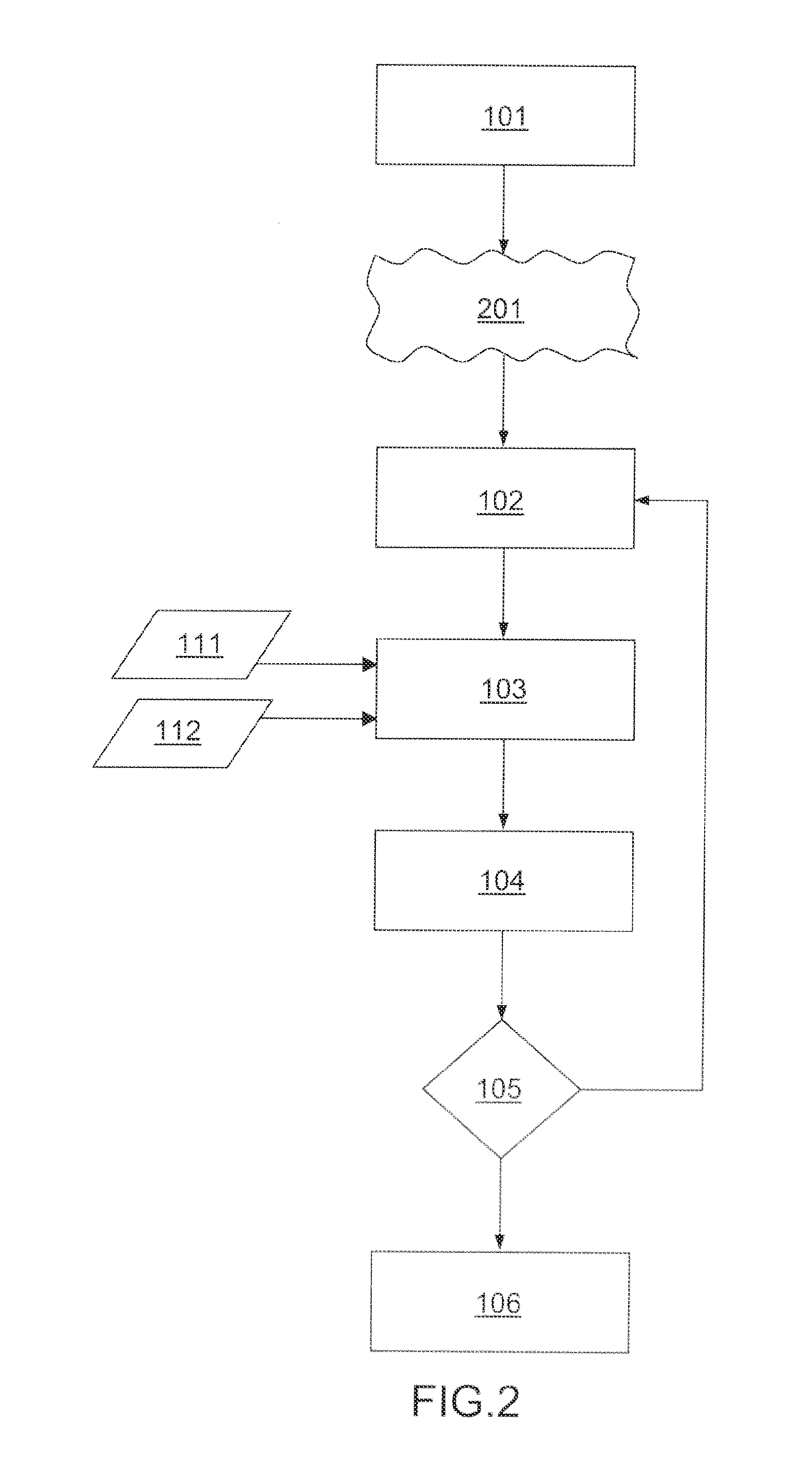Method of Modelling Buildings on the Basis of a Georeferenced Image
- Summary
- Abstract
- Description
- Claims
- Application Information
AI Technical Summary
Benefits of technology
Problems solved by technology
Method used
Image
Examples
Embodiment Construction
[0066]The examples presented subsequently are applied to the modelling of buildings, but the method according to the invention may be applied to the modelling of any real object whose dimensions are significant enough to appear on the image.
[0067]FIG. 1 illustrates the steps of a first implementation of the modelling method according to the invention. The method is executed on a georeferenced image emanating from a sensor onboard an aircraft or a satellite. The picture-capture model of the georeferenced image may be represented by a parametrized function, denoted fθ1, . . . , θn(X,Y,Z), matching up a 3D coordinate of the terrain space with a corresponding 2D coordinate on the image:
ƒ(θ, . . . ,θn)(Xterrain,Yterrain,Zterrain)=(columnimage,rowimage)
where the parameters θ1, . . . , θn depend on the physical characteristics of the sensor.
[0068]The method may be executed only if the image is not orthorectified, stated otherwise, if the function f satisfies that
∂f(θ,…,θn)∂Z
[0069]is not id...
PUM
 Login to View More
Login to View More Abstract
Description
Claims
Application Information
 Login to View More
Login to View More - R&D
- Intellectual Property
- Life Sciences
- Materials
- Tech Scout
- Unparalleled Data Quality
- Higher Quality Content
- 60% Fewer Hallucinations
Browse by: Latest US Patents, China's latest patents, Technical Efficacy Thesaurus, Application Domain, Technology Topic, Popular Technical Reports.
© 2025 PatSnap. All rights reserved.Legal|Privacy policy|Modern Slavery Act Transparency Statement|Sitemap|About US| Contact US: help@patsnap.com



